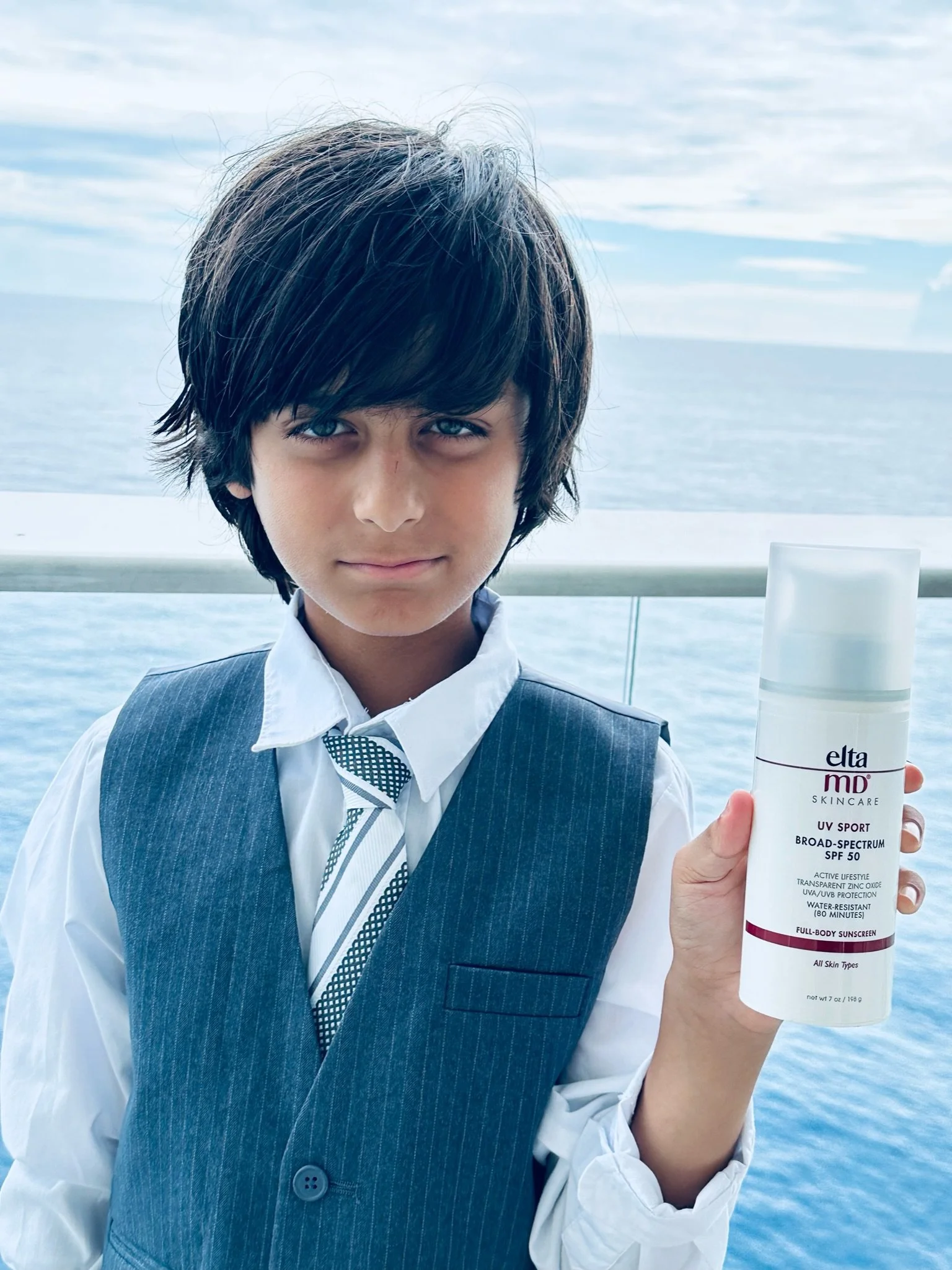Sun Protection
The best thing you can do for your skin is to protect it from the sun. Skin cancer has been shown to be directly related to sun exposure. In addition, sun exposure prematurely ages the skin, resulting in fine lines, wrinkles, and uneven skin tone. The following steps will help your skin last its longest.
1. MINIMIZE SUN EXPOSURE:
Avoid being out during peak hours when the UV intensity is the greatest. This is usually between the hours of 10 am and 2 pm, but in places like Houston, the sun can be pretty intense until about 4 pm. Seek the shade! Even if you are wearing sunscreen, sunbathing is still harmful.
2. WEAR SUN-PROTECTIVE CLOTHING:
This means a hat with at least a 4-inch brim, a long-sleeved shirt, and long pants or skirt. The fabric should be sun-protective, as light cotton material does not protect well from the sun. Look for clothing labeled with “UPF” or buy from specific clothing lines marketed for this purpose (Coolibar, Solumbra, Solartex).
3. USE SPF 15 OR GREATER:
The Skin Cancer Foundation considers SPF 15 acceptable for normal, everyday use and SPF 30 or greater for more prolonged sun exposure. Look for the labels “Broad-spectrum” if possible. These days, many people are wary of “chemicals” in sunscreens. In this case, it is best to look for the ingredients titanium dioxide or zinc oxide – these physically block the rays of the sun from reaching the skin, and they are quite effective. Favorites in this category include:
Elta MD UV Pure (available at dermatology offices)
Elta MD UV Physical (tinted, available at dermatology offices)
Cerave with clear zinc oxide (over the counter)
Blue Lizard Sensitive Sunscreen (over the counter
Neutrogena Pure and Free (over the counter)
4. APPLY SUNCREEEN TO YOUR FACE EVERY MORNING. FAVORITES FOR THIS PURPOSE INCLUDE:
Skinceuticals Physical Fusion Matte (available at dermatology offices)
Elta MD UV Daily or UV Clear (tinted and non-tinted available at dermatology offices)
SkinMedica Total Defense and Repair (blocks UV and infrared, available at dermatology offices)
Intellishade by Revision (chemical sunscreen, available at dermatology offices)
Color Science Sunforgettable Mineral Sunscreen Brush (available at dermatology offices)
5. USE 2 OZ OF SUNSCREEN (A SHOT GLASS AMOUNT) TO COVER THE ENTIRE BODY.
Most people don't use nearly enough sunscreen. Reapply sunscreen every 2 hours if you are out in the sun, and reapply after swimming or perspiration.
6. BE WARY OF REFLECTIVE SURFACES:
Snow, water, sand, and concrete all increase exposure, and even shade is not complete protection when there is significant reflection from surroundings.
7. AVOID TANNING BOOTHS LIKE THE PLAGUE.
Seriously. Pale is the new tan.
8. IF YOU THINK YOU ARE ALLERGIC TO SUNSCREEN, TALK TO US ABOUT IT.
There are many sunscreens that are better for sensitive skin. In addition, patch testing (a form of allergy testing) can be done to determine if you are allergic to the sunscreen itself or to the preservatives that are in the sunscreens.
9. INFANTS UNDER 6 MONTHS:
Sunscreen is not recommended for this age group, as it has not been studied. The best recommendation is to keep these little ones completely out of the sun. If sun exposure is unavoidable (it’s always avoidable!), use sun protective clothing as well as one of the sunscreens that contain titanium dioxide or zinc oxide.

